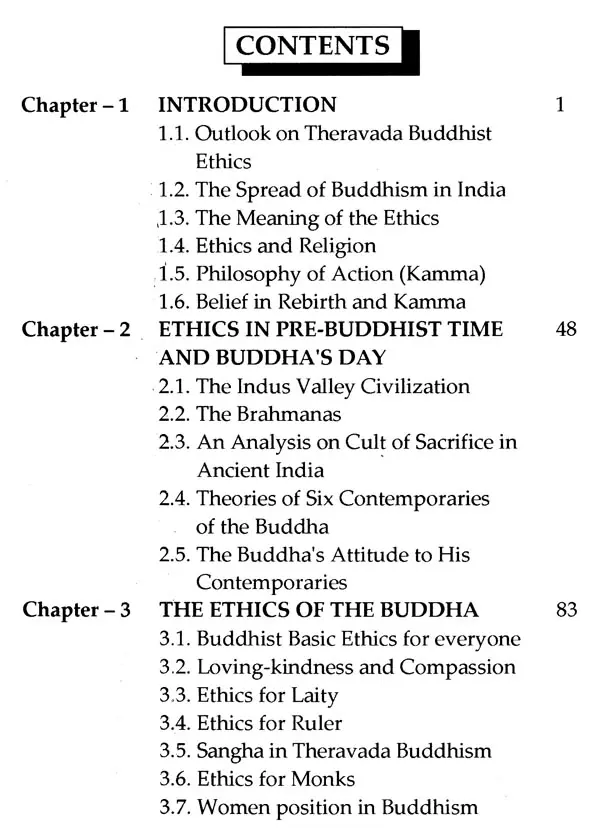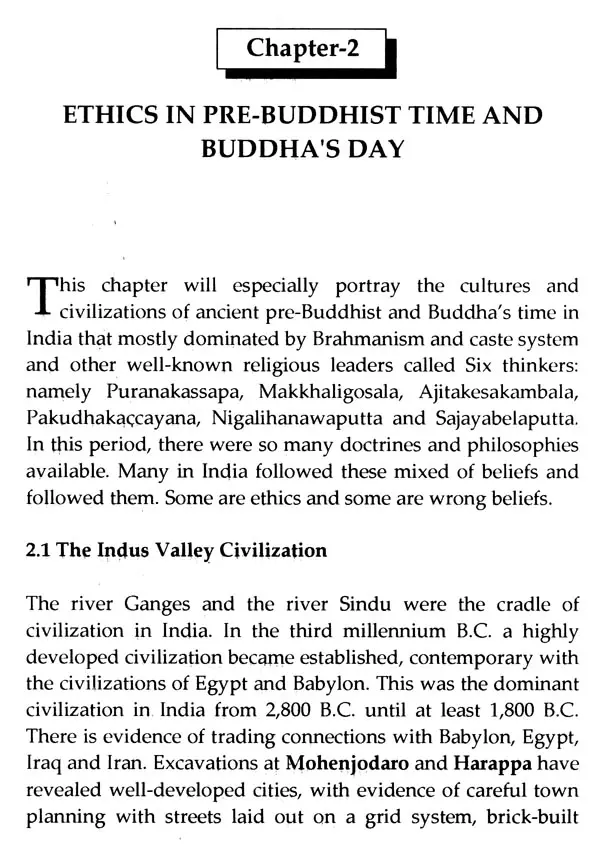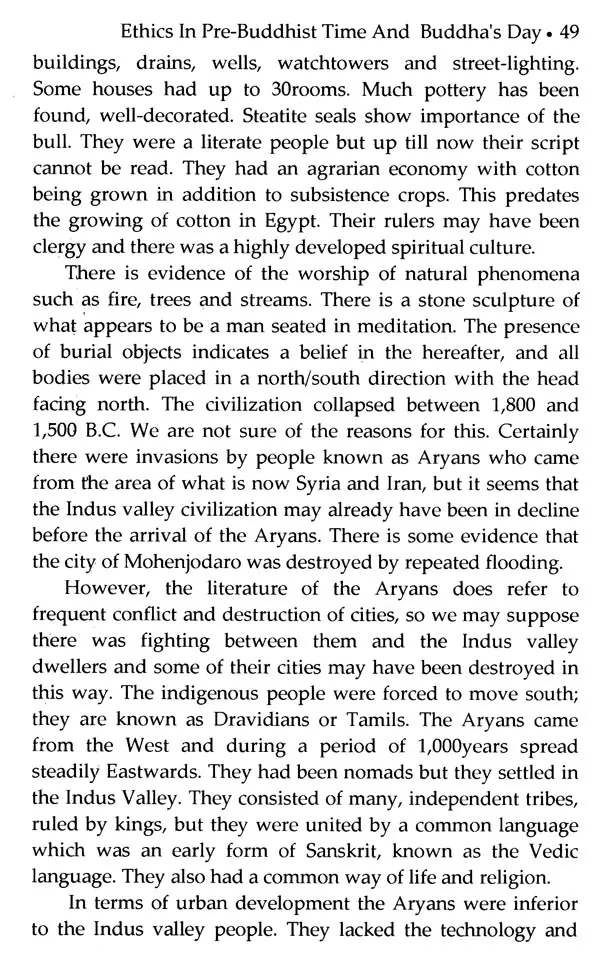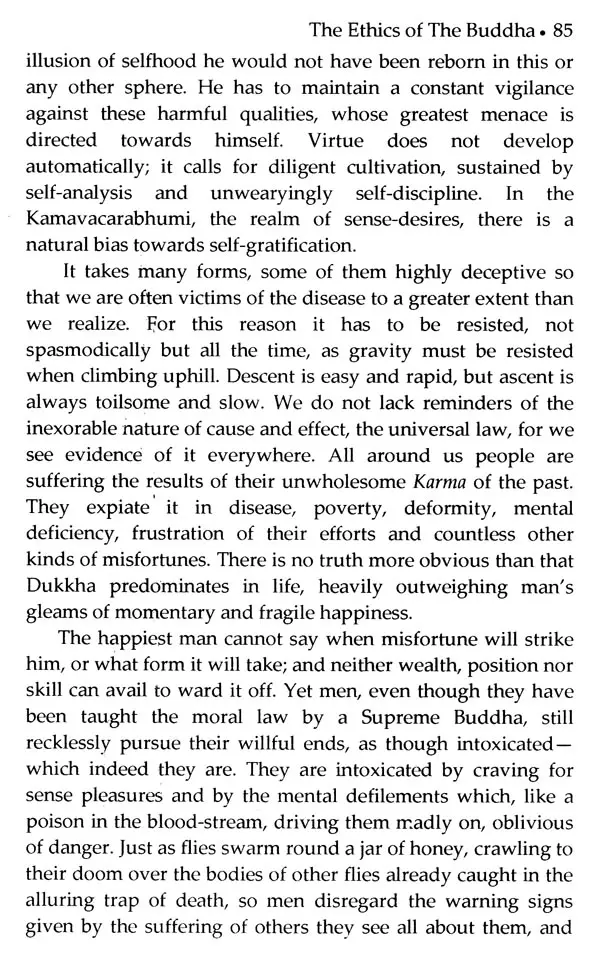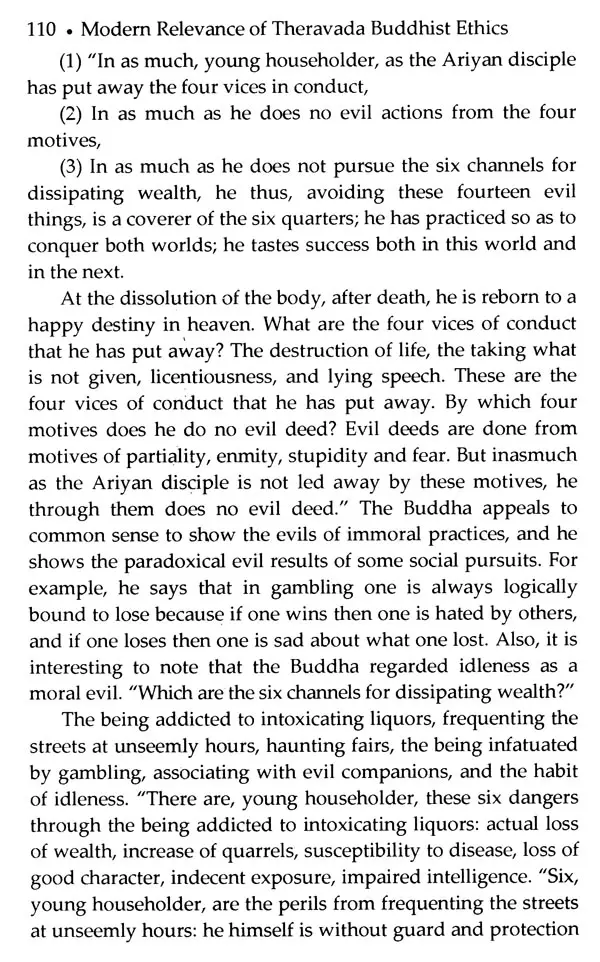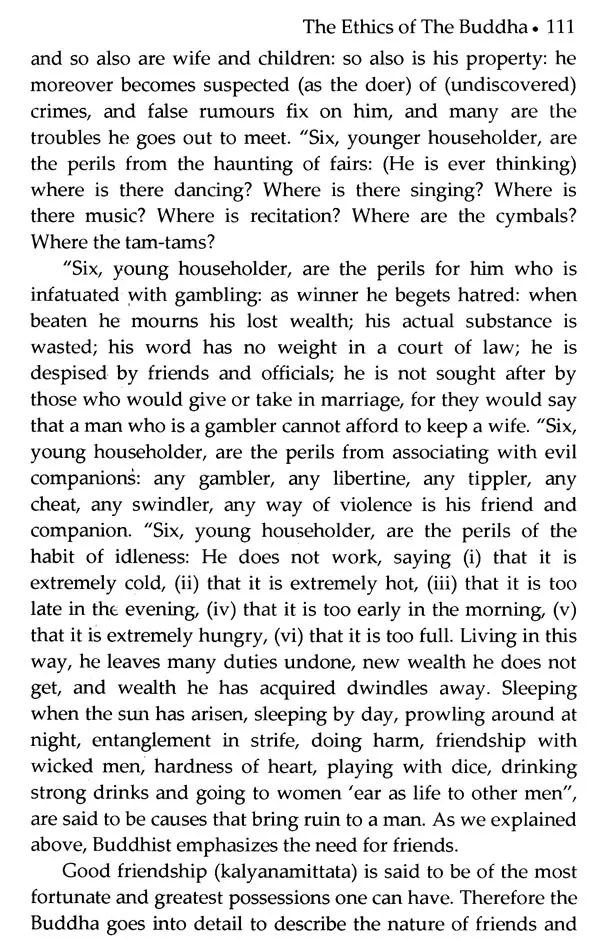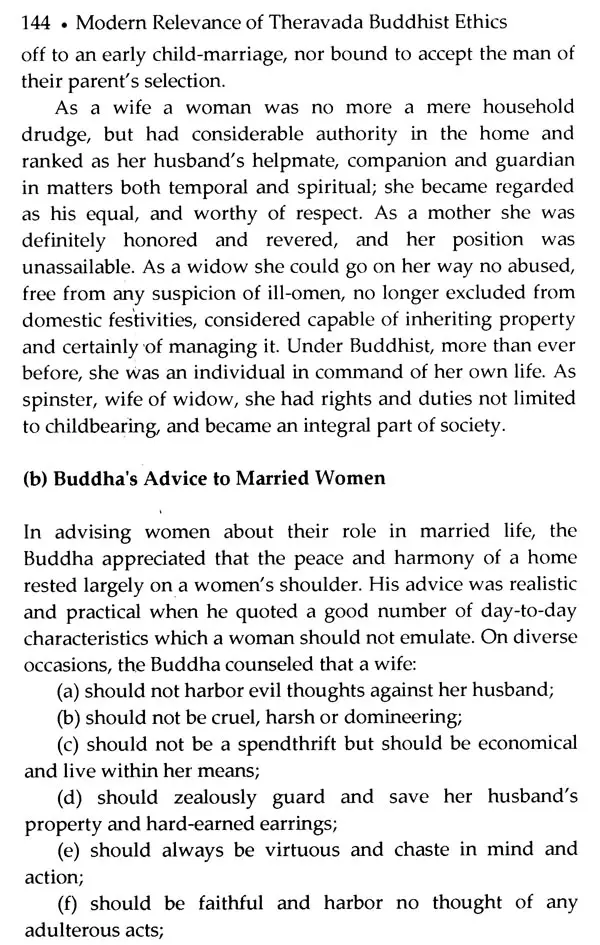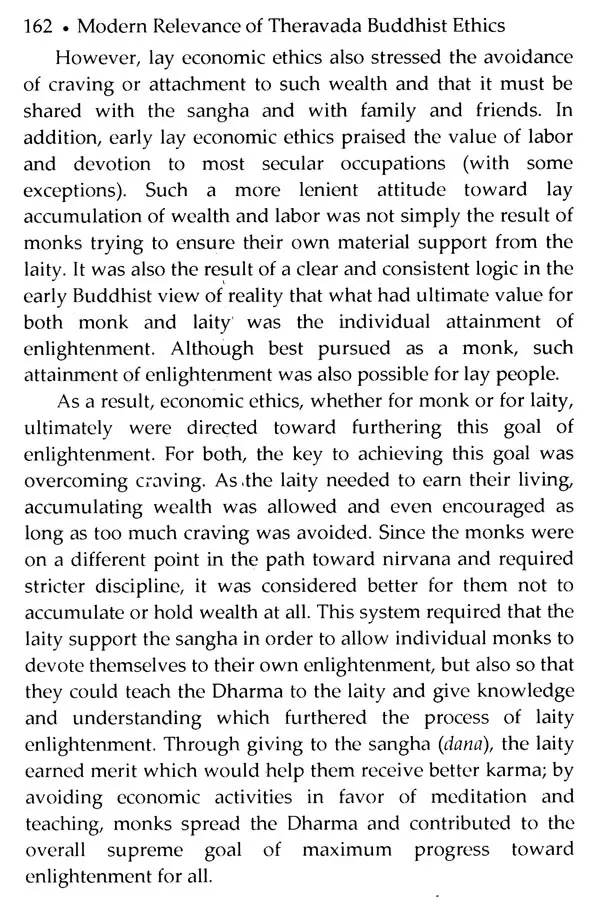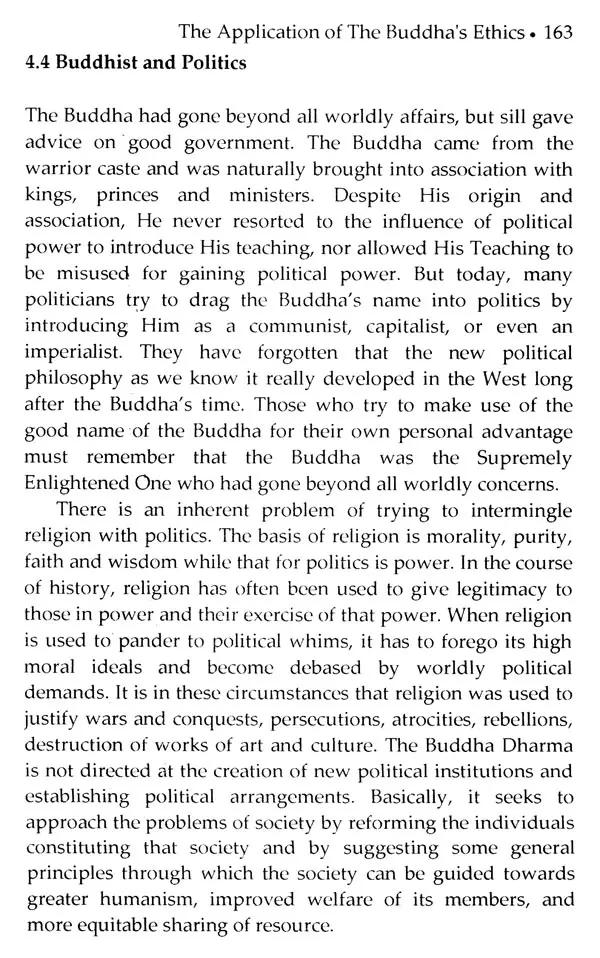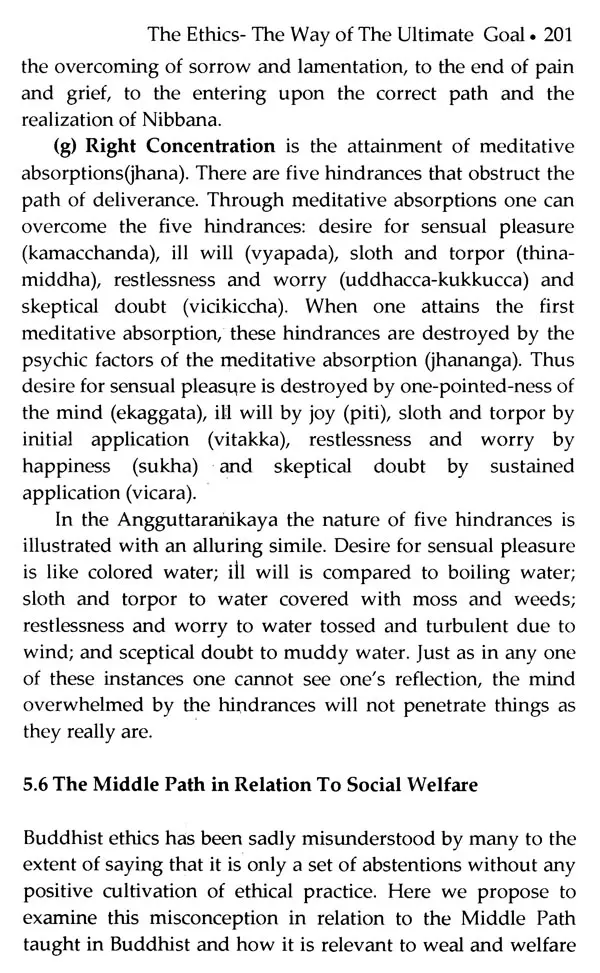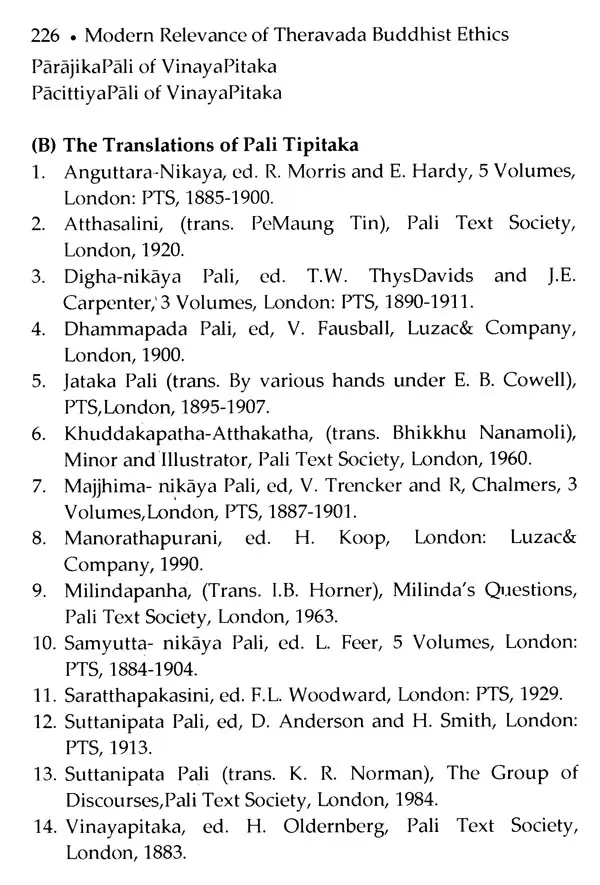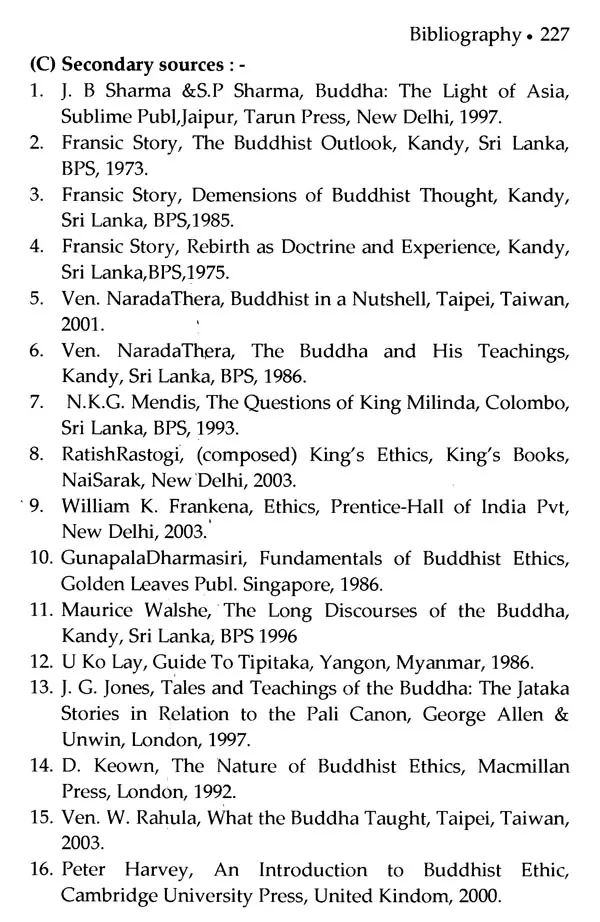
Modern Relevance of Theravada Buddhist Ethics
Book Specification
| Item Code: | UAE438 |
| Author: | Sohan Raj Tater and Suresh Kumar Agrawal |
| Publisher: | Literary Circle, Jaipur |
| Language: | English |
| Edition: | 2018 |
| ISBN: | 9789381951620 |
| Pages: | 238 |
| Cover: | HARDCOVER |
| Other Details | 9.00 X 6.00 inch |
| Weight | 420 gm |
Book Description
Wisdom is . like unto man's eyes; morality is like unto his feet. One of the appellatives off the Buddha is endowed with wisdom and conduct. Of the Four Noble Truths that form the foundation of Buddhism, the first three represent the philosophy of the Buddha's teaching; the fourth ethics of Buddhism based on that philosophy.
The Sila refer to the moral ethics and purity of the word, thought and deed all together. Sila comes with four conditions and these are extinguishment, chastity, quiet and calmness.
Sila or the Buddhist ethics lie at the center of meditative cultivation, otherwise known as mind cultivation. A distinction is being made between the mind of the cultivator, thus internal, and the community which is an external element. The Buddhist ethics involve promoting the peace of both the mind, internal, and that of the community, external. In the vision of Buddha, Sila refers to principles of moral behavior and it encompasses several different levels including basic morality, novice monk hood, and monk hood. Basic morality includes five precepts which are refraining from taking life, from taking what is not given, from sensual misconduct, from lying, and from intoxicants causing the loss of mindfulness.
This research book "Modern Relevance of Theravada Buddhist Ethics" is presented before the world of scholars, literary figures, research scholars and readers. Their satisfaction will be great reward to us for this research work.
Buddhist ethics is grounded in a theory of the nature of reality. It is logically embedded in Buddhist causality and the concomitant notion of nonsubstantiallty. The presumption is that everything has a cause, that something cannot arise out of nothing, and that all phenomena thus fall under causal law. It follows that everything depends on something, indeed everything, else. This is known as the principle of dependent origination, and it lies at the heart of Buddhist philosophy. On a physical level, every object obviously depends on a variety of causes and conditions. No element in nature can be conceived of as not connected to myriad others. No element or object possesses an intrinsic, independent identity.
The principle of interdependence naturally leads to the conclusion that there is no separate self or soul either. In addition, if everything is subject to causation, then everything is also constantly changing and is impermanent. According to Buddhist philosophy, a person is a combination of five fluctuating aggregates (body, sensation, perception, dispositions, and consciousness). We cannot claim that any of these constitutes an intransigent self. During Buddhism's 2,500 year history, several thriving sects have emerged, each with a unique take on the teachings of Buddha and daily practice.
Among the three dominant strains of Buddhism: Theravada, Mahayana, and Vajrayana, along with a fourth-Zen Buddhism-that grew out of Mahayana and has gained increasing popularity in the West, we'll contrast the importance and necessities of practicing Theravada - by exploring this tradition differing approaches to the dharma, their conduct of monastic practice, and the geographic boundaries that define them.
Literal meaning of Theravada is "teaching of the elders" which refers to the pure or original teachings of the Buddha over 2500 years ago. Theravada is a Dharmic religion. It is not a theistic system and perceives theistic religions as mistaken.
Since their birth ordinary human beings possess ignorance, desire (lust), germ, greed, and delusion which lead to the suffering. Monks and nuns who form the Clergy (Sangha) unitedly follow the teachings of the Buddha. The practice is done through donating (alms-giving, etc.), Morality, and Meditation (insight) where Morality is believed to be nobler than donation and meditation is nobler than morality.
Women can become nuns which has been from the beginning allowed directly by the Buddha himself but was not allowed for many centuries after his death until it was again allowed fairly recently.
What is Buddhist is a question that can be answered in many times. It is firstly a religion and a philosophy but it is also the reflection of the Buddhist beliefs and practices.
Here one can learn more about the Buddhist ethics or what is known in Buddhist as Sila and translated into morality, ethics, precept or virtuous behavior. Buddhist ethics evolve around three main concepts and these are Sila, Samadhi and Panya as well as Paramita. Sila represents an action that has been taken or committed through the body, mind and speech of the being and it is characterized by intentional effort.
The Sila thus therefore refer to the moral ethics and purity of the word, thought and deed all together. Sila comes with four conditions and these are extinguishment, chastity, quiet and calmness. Sila or the Buddhist ethics lie at the center of meditative cultivation, otherwise known as mind cultivation. A distinction is being made between the mind of the cultivator, thus internal, and the community which is an external element. The Buddhist ethics involve promoting the peace of both the mind, internal, and that of the community, external. In the vision of Buddha, Sila refers to principles of moral behavior and it encompasses several different levels including basic morality, novice monk hood, and monk hood.
Basic morality includes five precepts which are refraining from taking life, from taking what is not given, from sensual misconduct, from lying, and from intoxicants causing the loss of mindfulness.
In Buddhist, these precepts are not seen as imperative but the cultivation of .ethical conduct will refine consciousness after rebirth and this is not necessarily linked to Buddhist practices in the sense that it occurs even if one does not practice this religion. The Buddhist ethics can however become imperative at the higher levels of Sila and they are most stringent through the precepts of monk hood.
Buddhist contains an excellent moral code, including one for the monks and another for the laity, but it is much more than an ordinary moral teaching. Morality (Sila) is only the preliminary stage I and is a means to amend, but not an end in itself. Though absolutely essential, it alone does not lead to one's Deliverance or perfect purity. It is only the first stage on the Path of Purity.
Beyond morality is' wisdom. The base of Buddhist is morality, and wisdom is its apex. As the pair of wings of a bird are these two, complementary virtues. Wisdom is like unto man's eyes; morality is like unto his feet. One of the appellatives off the Buddha is endowed with wisdom and conduct. Of the Four Noble Truths that form the foundation of Buddhist, the first three represent the philosophy of the Buddha's teaching; the fourth ethics of Buddhist based on that philosophy. Morality in Buddhist not founded on any doubtful divine revelation, nor is it the ingenious invention of an exceptional mind, but it is a rational and practical code based on verifiable facts and individual experience.
Book's Contents and Sample Pages
